Pran, Nadi, Kundalini, and Chakras
Kund is a small body of water, in a circular shape, Kundal is an earring in a circular shape, Kundalini is circles or coils. Kundalini is the position of a coiled snake. It is also known by the name Bhujangini.
Pran is the life source. Pran is not the same as breathing
Word Naad means Gunj, Vibration, Motion, Flow.
Chakra means movement. Pran movement happens in Chakras
Susumna means—Dormant or shushupt.
Vishnu is Pran/Atma, Brahma is intellect/Creation, and Shiv is consciousness.
Pran, Nadi, Atma, Kundalini, Chakra, Bindu, and consciousness are not visible to human eyes.
There are 72000 nadis( Energy Channels) in the human body through which pran travels and keeps all body parts alive and conscious. The main nadis are in the back- Ida or Chandrama and Pingala or Surya. These run on either side of the spine, Ida on the left side, and Pingala on the right side. Ida is usually represented by white color and is associated with love, nurturing, emotions, etc. Pingala is usually represented by red color and is associated with the working of somatic parts of the body. When in balance these activate Susumna which is in the middle. Chitrini and Brahma Nadis reside in Susumna Nadi. Brahma nadi is inside Chitrini and contains Pranava or Aum/Om sound. Mouth of Chitrini is called Brahmdvar.
At the lowest part of the spine, energy lies dormant in the shape of a coiled snake (3.5 coils) called Kundalini. As Ida and Pingala move upward, these meet each other at many points called Chakras. When they reach the top point (7th or Sahasrara Chakra) and are in balance then awakening happens. Awakening is the process of upward movement of prana from both Ida and Pingala via Susumna to the Sahasrara Chakra.
Meditation, Pranayam, Asan, Mantra, Tantra, and Yantra are some ways to awaken Kundalini.
There are seven major Chakras, 100 minor, and many minute ones. The major Chakras branch out in a total of 360 pathways (56+62+52+54+72+64). Each Chakra has a specific symbol, color, sounds, beej sound, element, mantra, animal, lotus blossom stage, Devi, and Devta. Each Chakra has some associated organs and gives unique quaities to the person meditating on it.
Earth Chakra is from the tip of the foot to the ankle.
Vegetation chakra is from ankle to knee.
Knee to hip is the animal chakra.
Spine has human Chakras
Agya chakra is Dev chakra
The seven major Chakras are:
1.Muladhaar-
Its attributes are described in shlok four to thirteen of Shat Chakra Nirupanam.
It is located at the root level between the anus and sexual organs. As the name suggests, it is at the base of the spine. Kundalini lies dormant here in the form of 3.5 times coiled snake around Shivling which has the color of a new leaf. This Linga (head of linga is downwards) is in the center in a red-colored triangle. It is swambhoo Shiv. The first step of awakening starts here. Within swyambhoo Linga lies Sri Parameshwari.
Muladhaar Chakra has four petals and its color is red. Inside the petals is a red circle then a golden square surrounded by eight shinning spears and innermost is a red triangle Kamarupa also known as Traipura. The letters on petals are of gold color.
It has a child form of Brahma, Devi is Dakini (Parmeshwari) who has one face, the animal is elephant king Airavat with seven tusks and Indra Devta as its rider, Ganesh in the form of human body and elephant head, and element earth. It has Vayu or Kanderp, everywhere. It has fifty-six branches.
It is associated with survival, stability, security, stamina, endurance, health, knowledge, speech, bliss, etc. Associated organs are organs of elimination.
In Moladhar Chakra animal kingdom unites with the human system. Here Shiva is in the form of Pashupati. The human consciousness starts developing in Muladhaar Chakra and it has memories of past life.
Three coils represent three guns--Sattv, Rajas, and Tamas. Half coil represents vikriti.

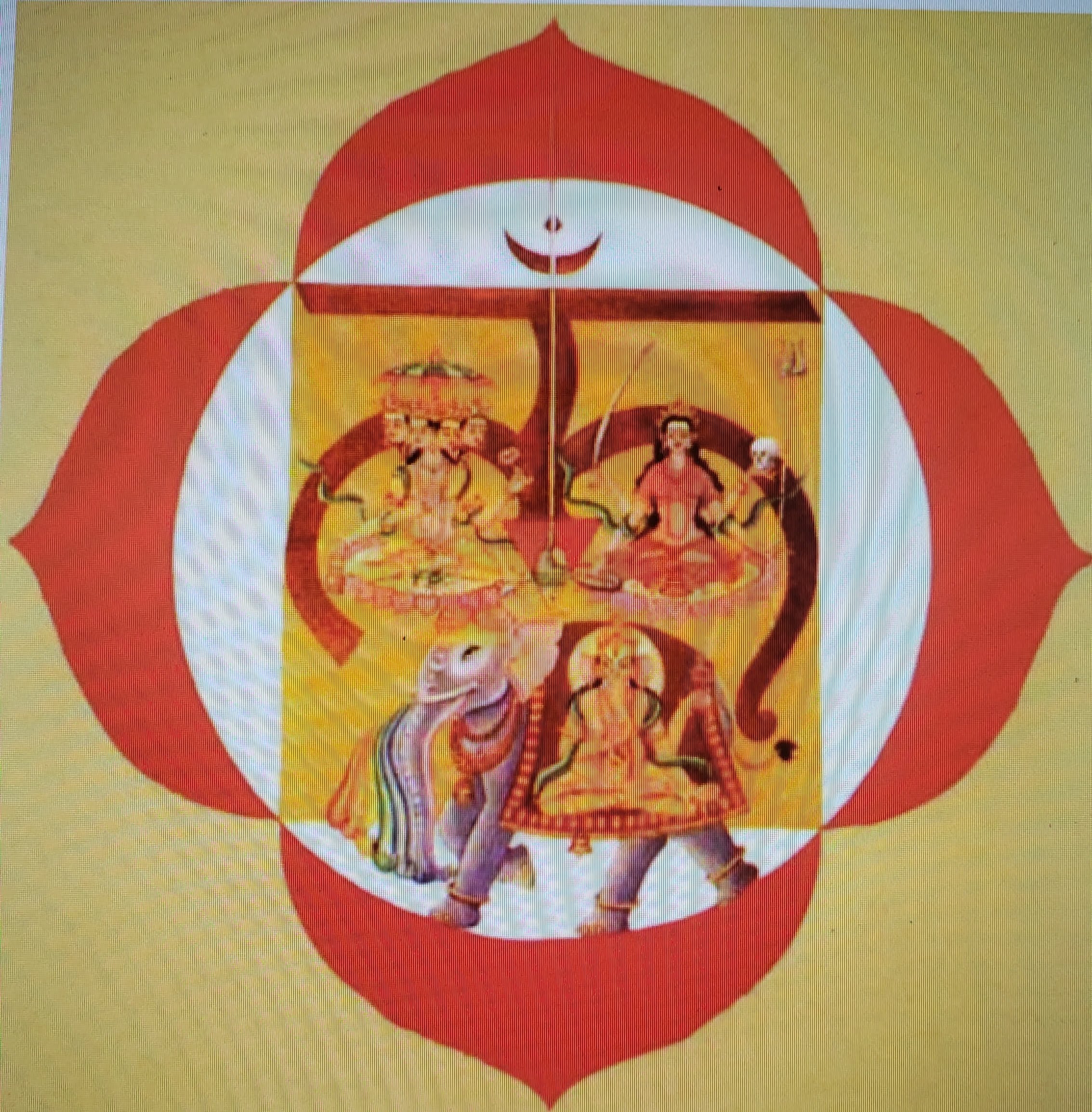
2.Svadhishthan
This word means well established. Shlok fourteen to eighteen of Shat Chakra Nirupanam describe this Chakra. It is located at the base of sex organs, has six petals, sixty-two branches, vermillion color, water element( half-moon shaped water area of Varun is of white color), Hari form of Vishnu as Devta, Rakini (Laxmi) with two faces as Devi, Makar crocodile as an animal, Varun Devta as a rider of crocodile, and is associated with sex organs, reproductive glands, kidney, and bladder. It is the place to feel, have the desire, and create. It is associated with pleasure, reproduction, and sexuality. Svadhishthan contains the subconscious from the present life and it removes the ego.
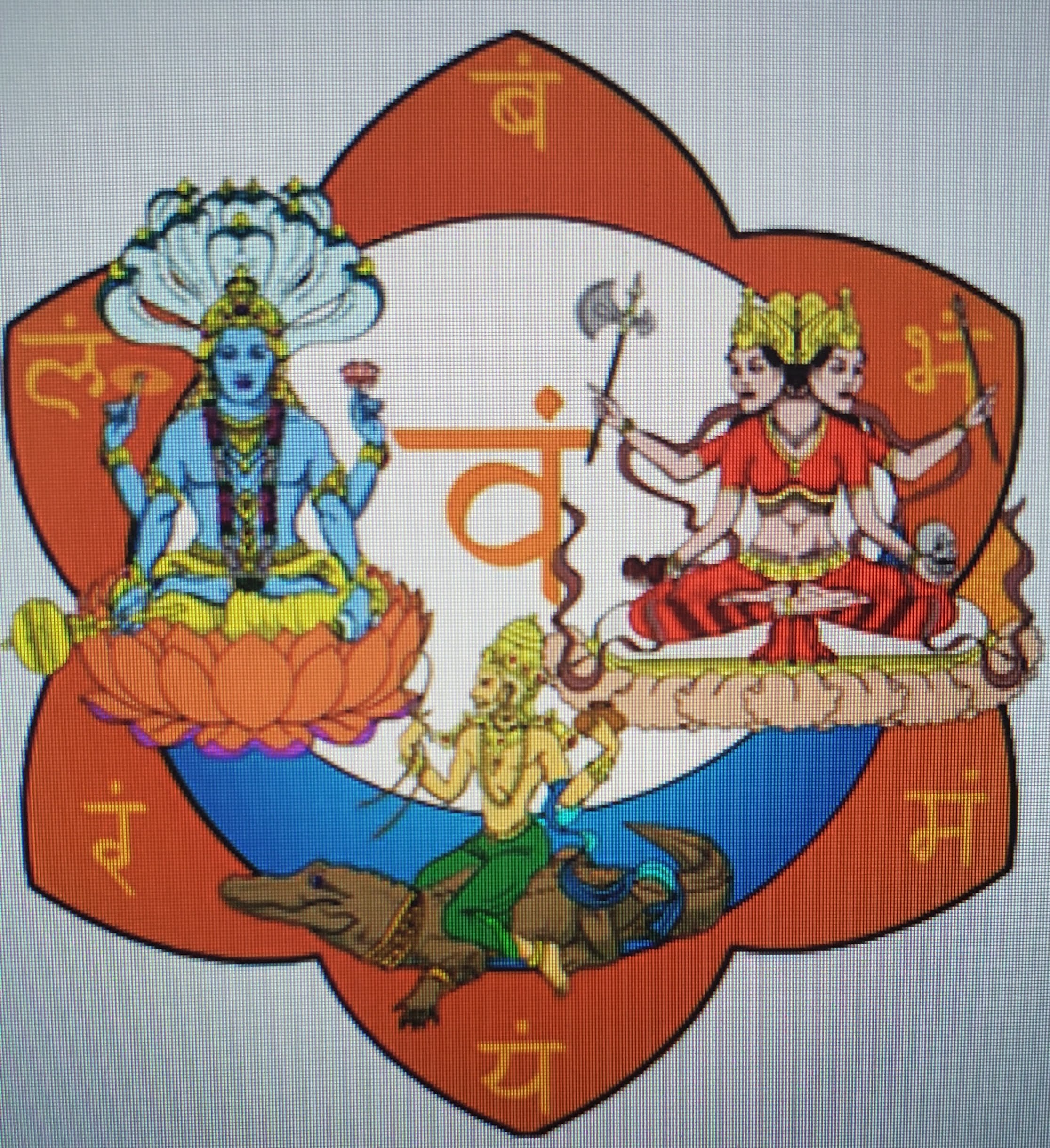
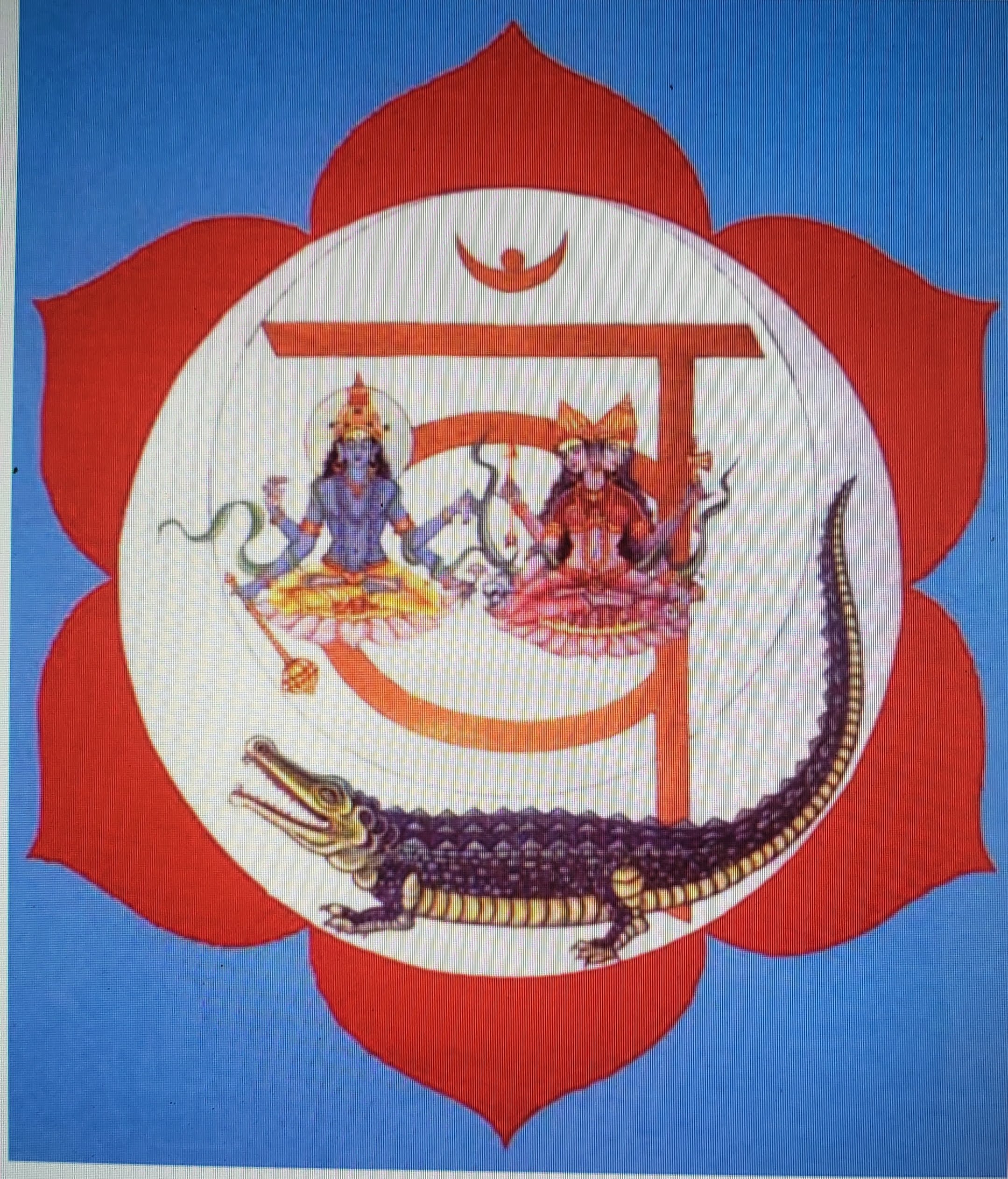
3.Manipura
Its location is below the Naval. Shlok nineteen to twenty-one in Shat Chakra Nirupanam describe this Chakra. It has ten blue colored petals, a bright red triangle inside the yellow circle(there are three Svastik marks on the outside of the triangle), fire element, Rudra form of Shiv, Lakini with three faces as Devi, Agni Devta riding Mesha animal, and fifty-two branches. Manipur contains present actions. It is associated with will power, personal power, commitment, ichha Shakti, accomplishment, hunger, and nourishment. Associated organs are liver, gall bladder, spleen, pancreas, adrenal glands (digestive organs).
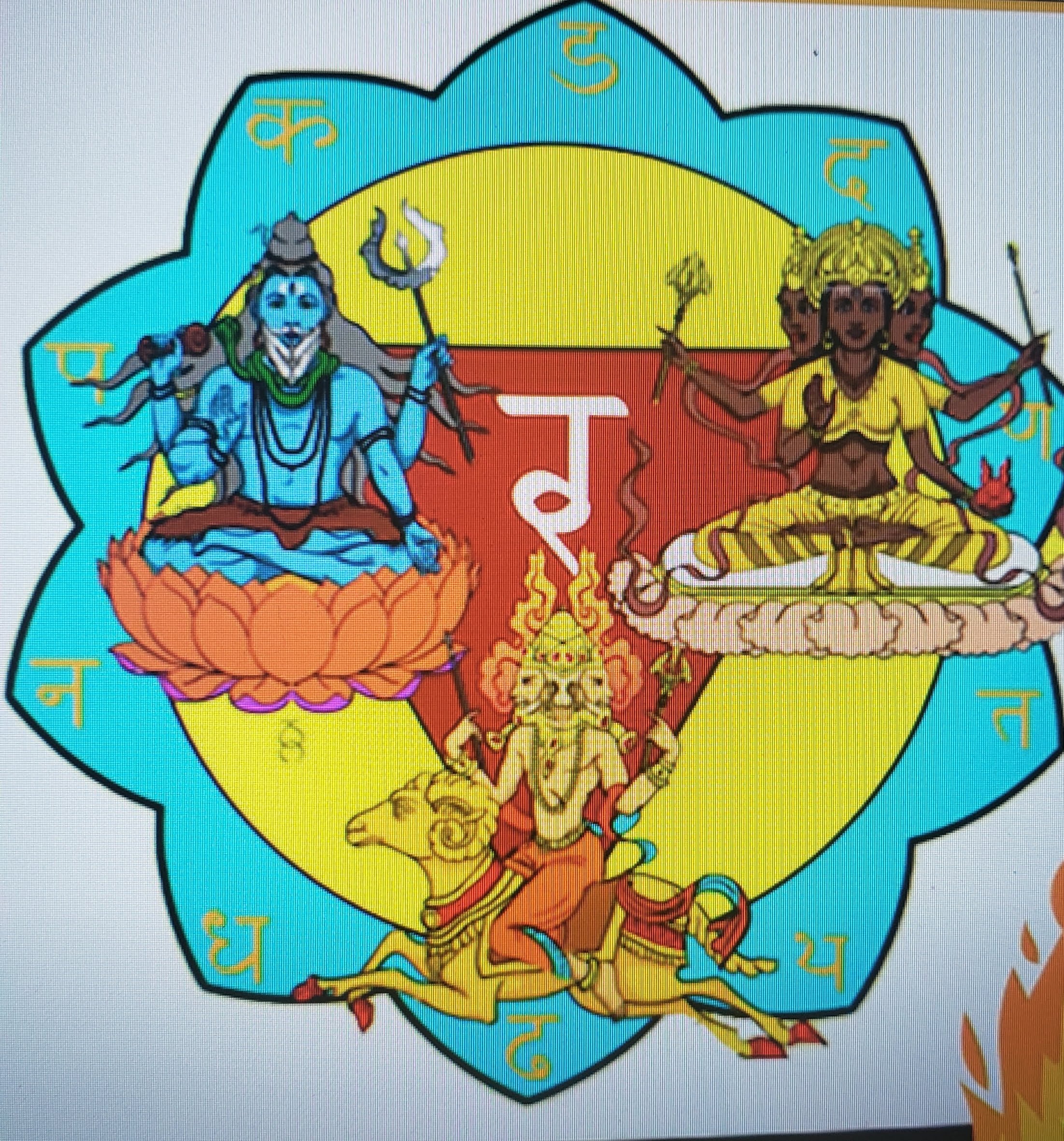
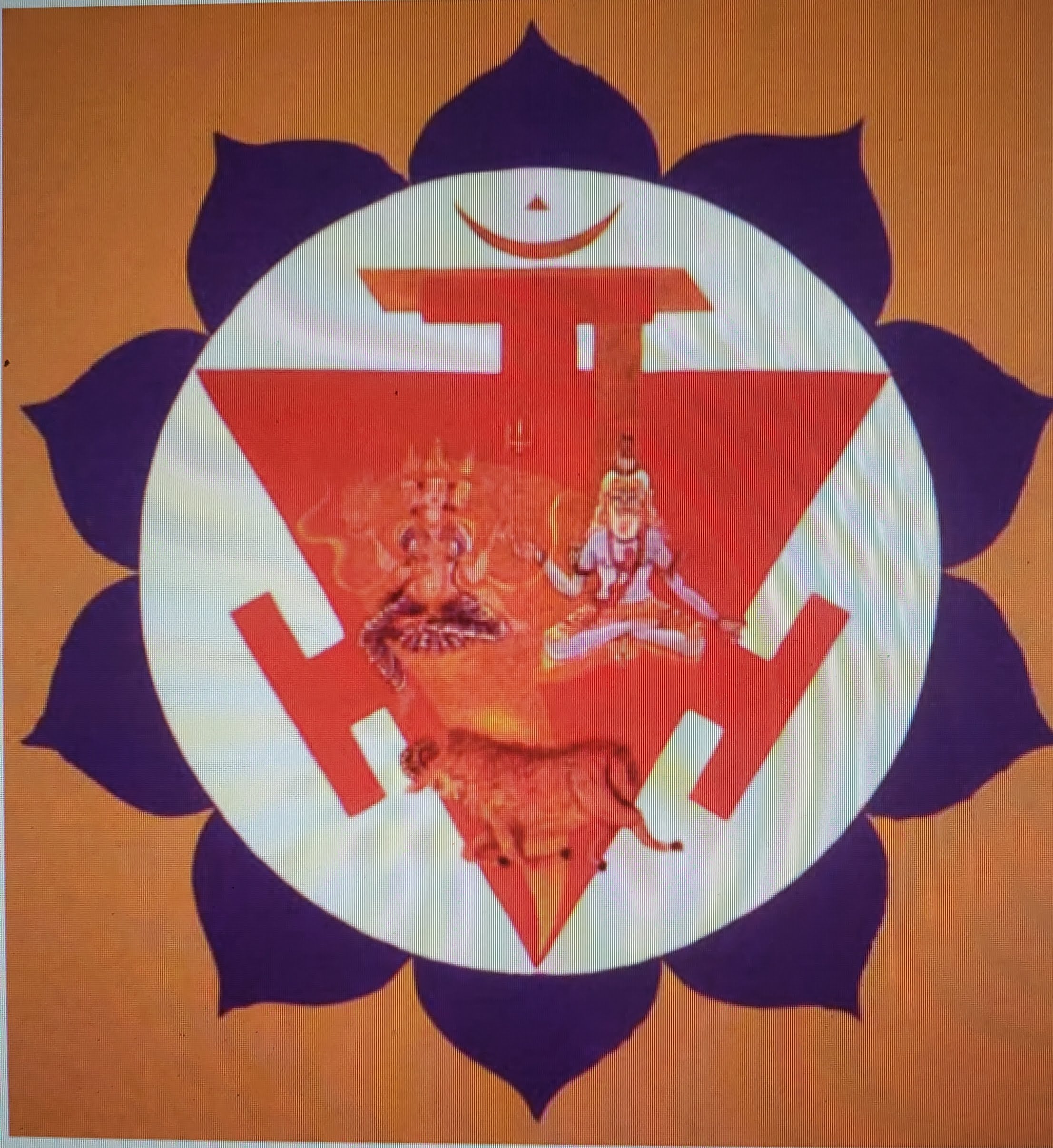
4.Anahat
It is located under the ribs, in the heart. Shlok twenty-two to twenty-seven, in Shat Chakra Nirupanam, describe this Chakra. It has twelve sindoor or vermillion colored petals, an upward and downward triangle (over each other), green color circle inside the petals, a triangle inside the circle, air as an element, antelope as an animal, Vayu devta on antelope, Kakini with four faces and three eyes as Devi, Isha form of Shiv as Devta, Baan Linga with a small opening at the top and associated Shakti and fifty-four branches. This Lotus is like Kalpvriksh and is place of Sarva.
It is the middle chakra located at the center of the spine. There are three Chakra above it and three below it. It is the balance point and is associated with emotions, love, compassion, forgiveness. It fulfills the desires. Spiritual awareness occurs here. It is the place of subtle Prana, Jeevatma, and Parashakti. Here the person can enter other’s bodies at will. The person meditating on this chakra can do both destruction and creation and is capable of efficient concentration. Associated organs are the heart, lungs, and thymus gland.
Anahat Naad is experienced by meditating on this chakr. Anahat Naad is internal, continuous, and sustained.
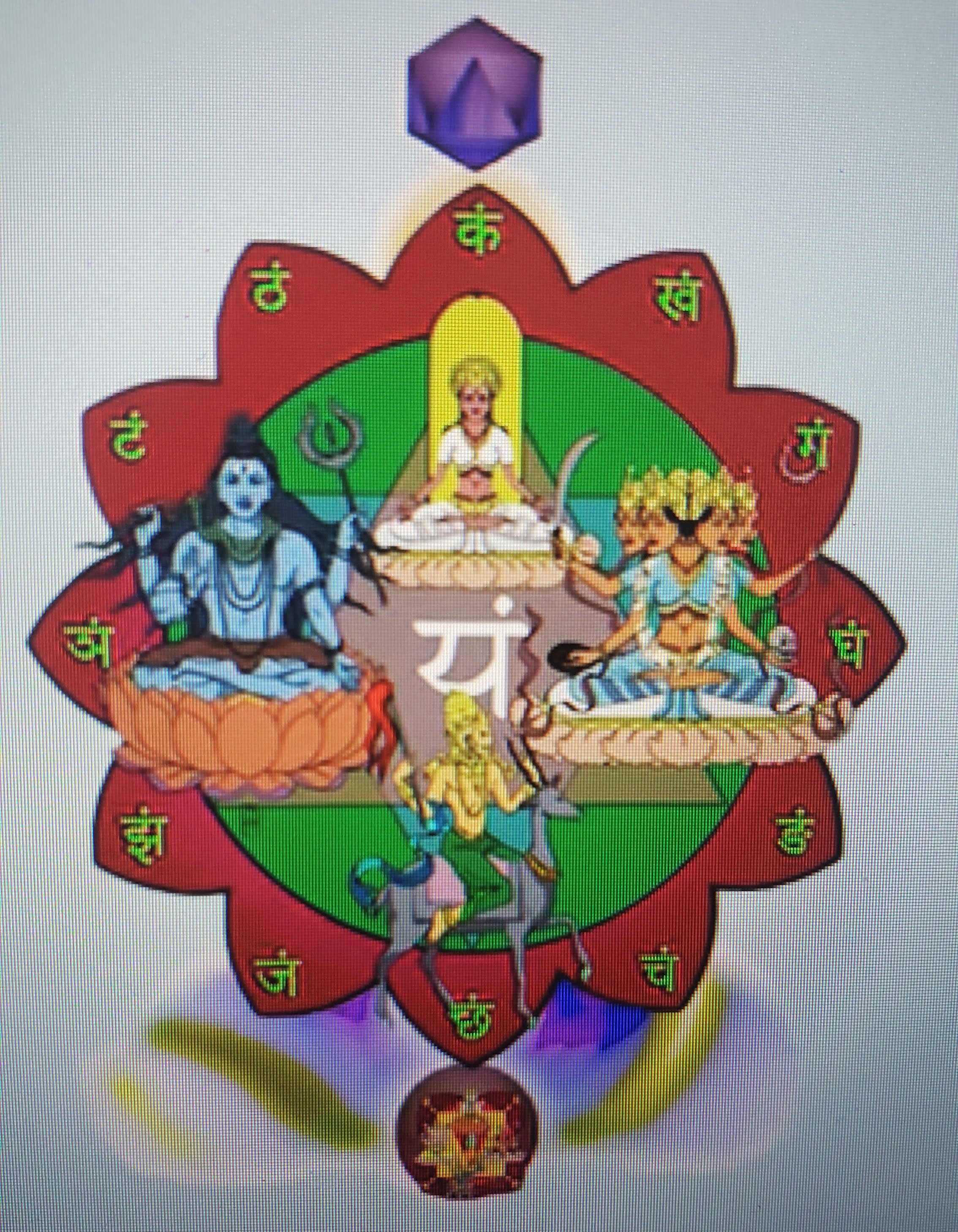
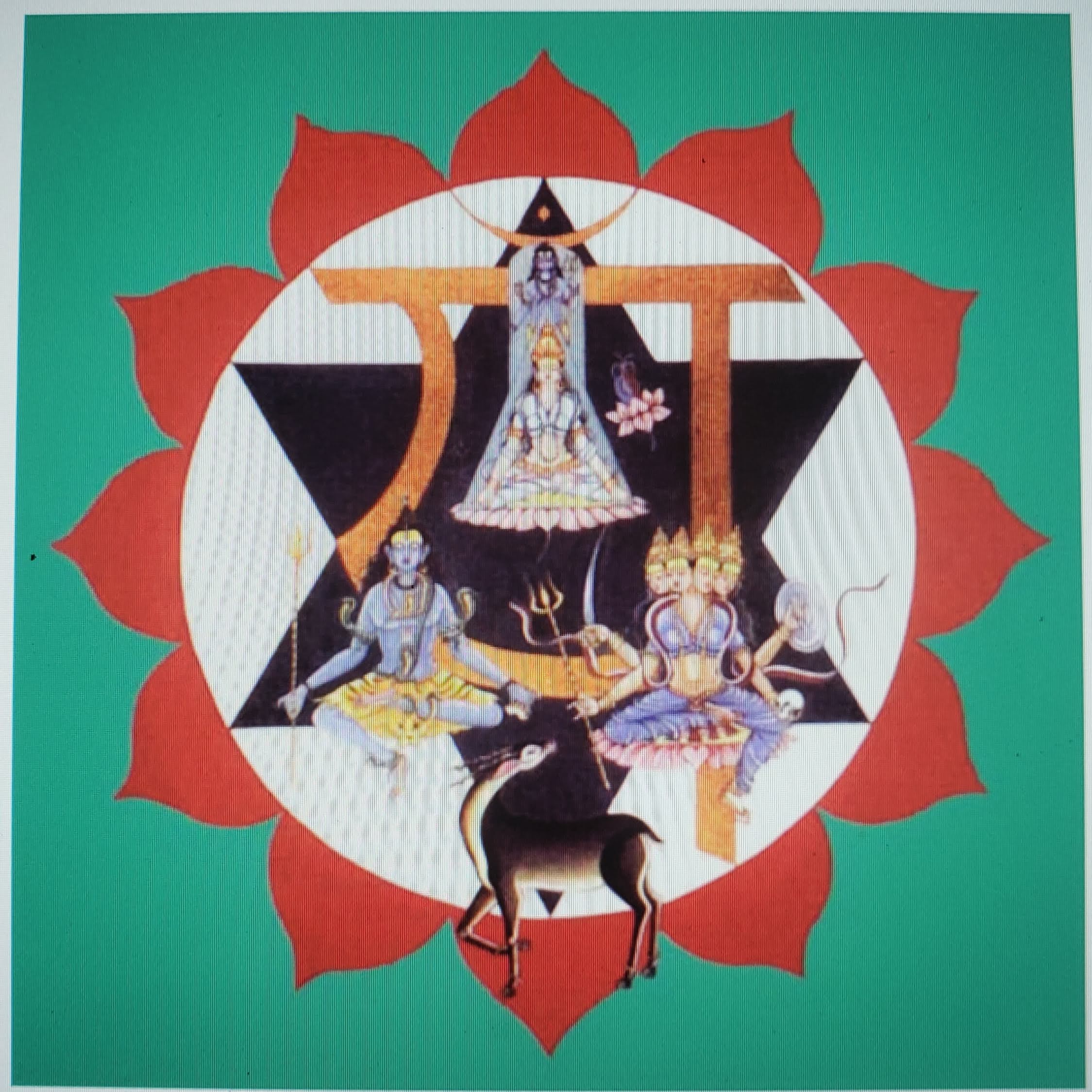
5.Vishudhi
Vishudh means pure. This chakra is located at the pit of the throat. Shlok twenty-eight to thirty-one in Shat Chakra Nirupanam, describe this Chakra. It has sixteen petals of purple color, ether as an element, five-faced Shakini as Devi, snow colored elephant as an animal, five-faced SadaShiva with Girija in his heart as Devta, and seventy-two branches. Inside the petals is a white circle representing Aakash. At Vishudhi some awakening is there but things are unclear. It is the purification center and is associated with higher discrimination, creativity, and self-expression. It gives the power of speech, health, strength, peace, knowledge, and mysticism. A person meditating on Vishuddhi chakra becomes Trikaldarshi, he sees past, present, and future and can transcend the three worlds, he can move three worlds, he gets a long life and can remove dangers like Hamsa. Even Brahma, Vishnu, Hari-Har, Ganapati, and Surya can not resist him. Associated organs are trachea, throat, and thyroid.

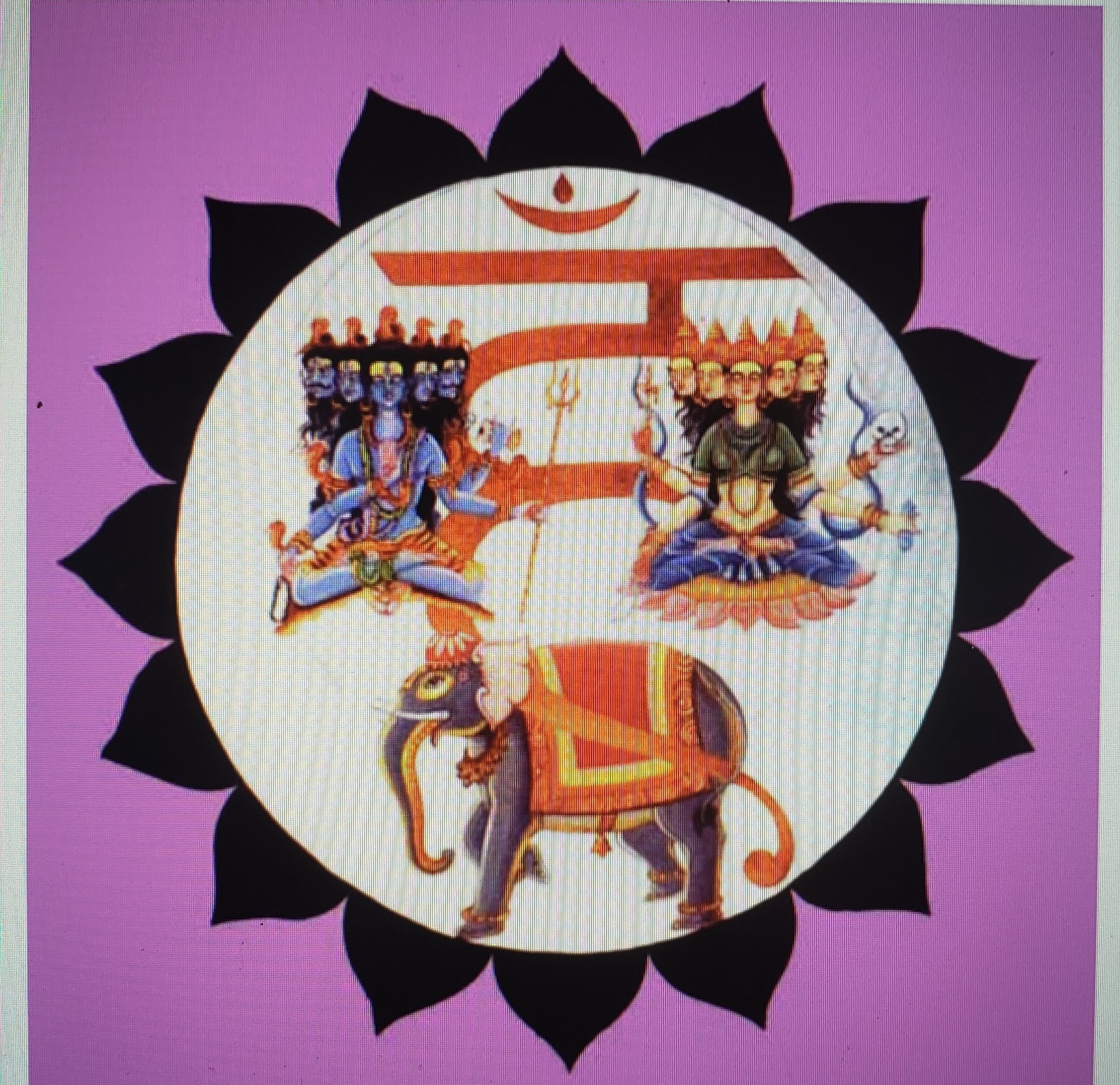
6.Agya or Ajna
Agya means command. The root sound is Ajna which means Gyan or knowledge. It is located between the eyebrows (position of the third eye). Shlok thirty-two to thirty-eight in Shat Chakra Nirupanam, describe this Chakra. It is a white Lotus with two petals. It has six-faced Hakini as Devi, with a damru in her hand, half male and half female form of Shiva, indigo color, and sixty-four branches. In this lotus lies the manas and in the yoni of the lotus is linga (Itara form of Shiva). It is the place of origin of Vedas. This is the abode of Vishnu. Here realization happens. It has Om sound which is the sound of Pranava or life source. Above Pranava is a crescent moon, above that is Makara in the form of a Bindu and above that is Nada.
Agya is where everything is clear. It is associated with intuition, wisdom, identity, sight, and perception. The person meditating on it is all-knowing and all-perceiving. He does good to all and has a long life. He is capable of creation, maintenance, and destruction of the three worlds. The associated organ is brain, mainly the pituitary gland. Here a Guru can pour his knowledge in his Shisya. One incident illustrating this is that of Shankaracharya and Totaka. Anand Giri or Totaka was an average student but very devoted to his Guru. Other students used to make fun of Anand Giri. His guru Shankaracharya transferred his knowledge to Anand Giri's mind and he started reciting glory of his guru. The person meditating on this Chakra can enter another's body at will. He is gyata of Shastras and benefits all. He is the best Muni. Here is omniscient and has realization of unity with Brahm.

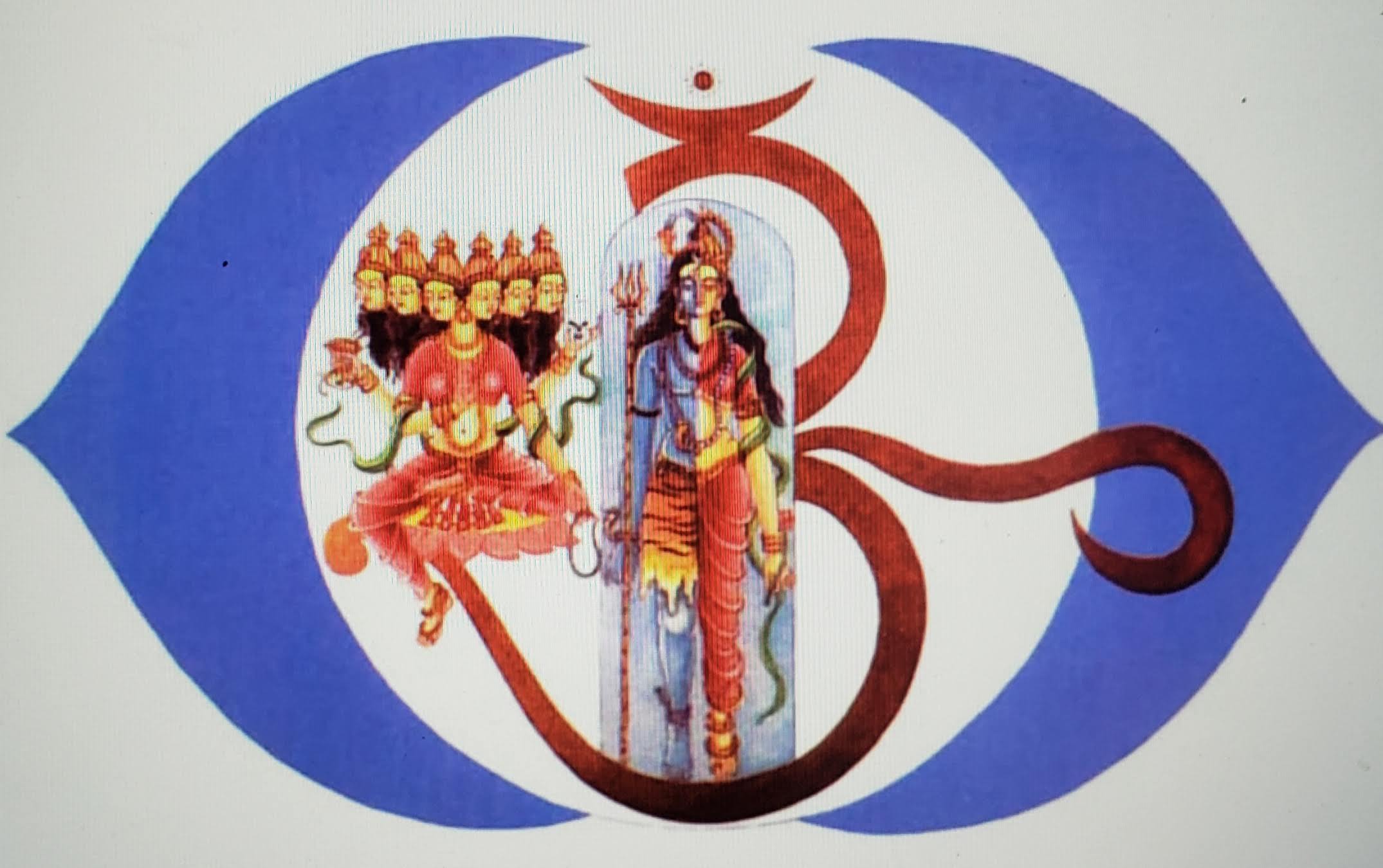
7.Sahasrara-
Shlok thirty-nine to fifty-five in Shat Chakra Nirupanam.
Its location is the crown of the head, color is violet, the associated organ is brain, mainly pineal gland. It is below Visarga.
It is in the form of a Lotus with thousand petals. Shasrara has a full moon. Inside the full moon, is Chandra Mandal (in a triangle). Inside Chandra Mandal is a void which has all the surs.
It is the source of Brahmrandhra or Divine light. Here the person gets liberated from all the karms and there is more insightful relation with the force of life. It is associated with vastness and Shankhini Nadi. Here, the person sees Mahanad and the lotus in his hand has siddhi of speech.
Bindu or Sunya manifests the pure Nirvana-Kala with Ama-Kala. Here is the ParamShiv or Brahman or Atma , here is the union of Rasa and Virasa or Shiv and Shakti. ParamShiv is the destroyer of the darkness of agyan and moh. By shedding a constant and profuse stream of nectar-like essence Bhagavan gives Yati the knowledge by which he realizes the oneness of the Jivatma and the Paramatma. He pervades all things and is the ever-flowing and spreading happiness known by the name of Hamsah Parama (Parama-hamsah). This is the adobe of Shiva or Parama Purusha or Hari-Hara or Devi or Prakriti-Purush.
With in Nirvan Kala is Nirvana-Shakti or Samanapada or Samani Shakti.
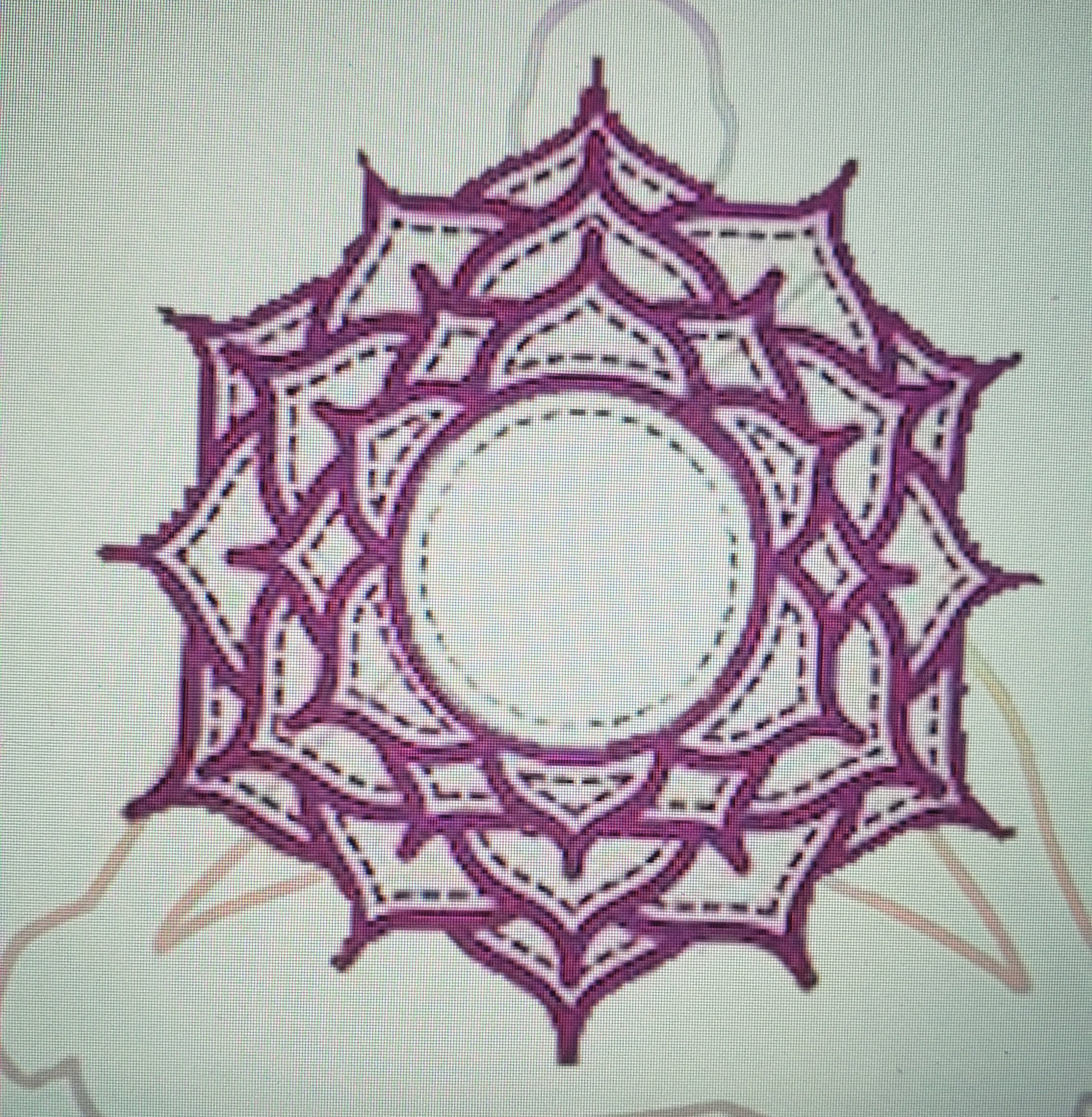
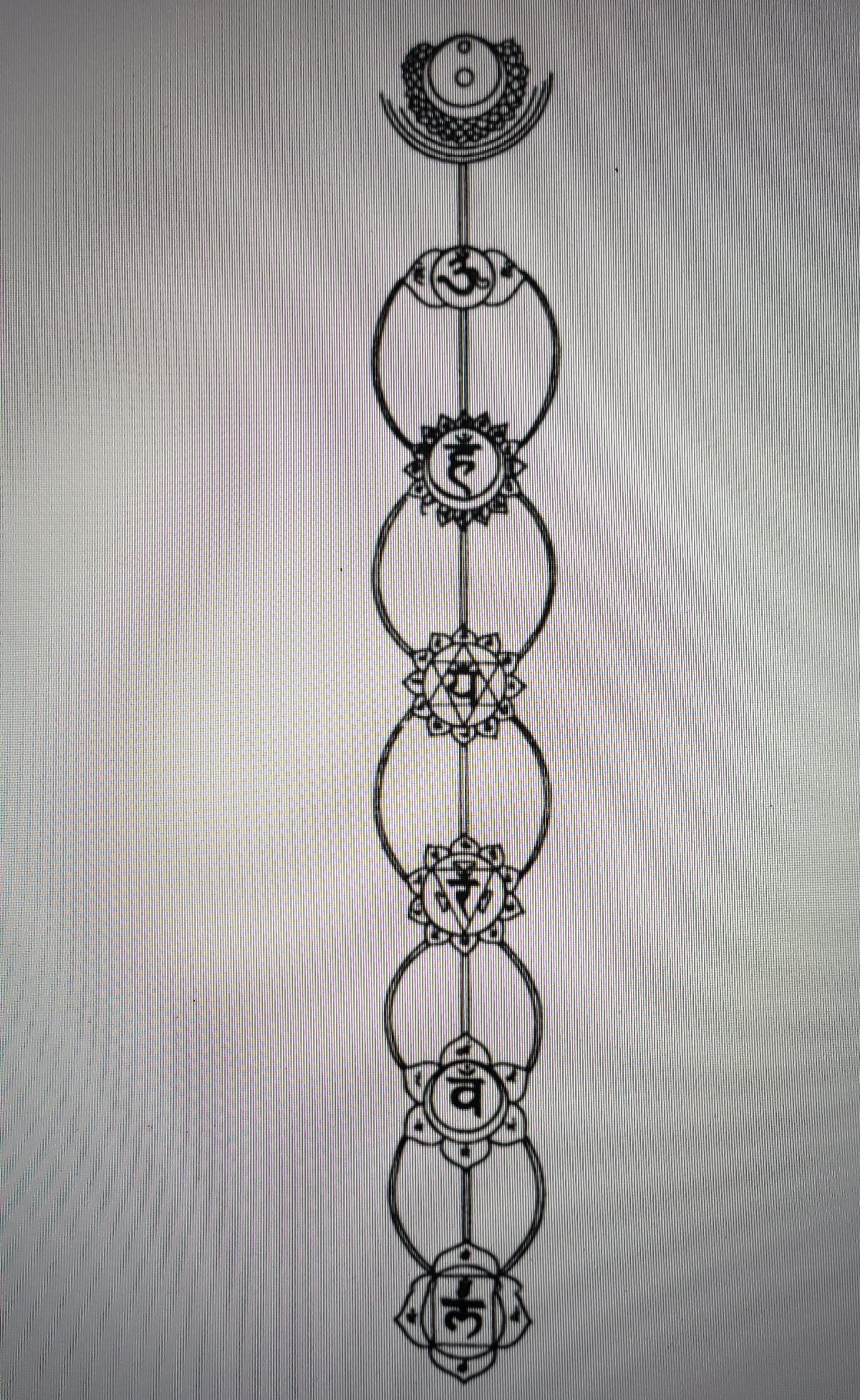
Muladhaar Chakra--Devi Dakini has one face, Child form of Brahma, Linga ia Swayambhoo Shiv, Earth element, Airavat
Svadhisthan Chakra--Devi Rakini has 2 faces, Hari form of Vishnu, Water element, Crocodile
Manipur Chakra- Devi Lakini has three faces, Rudra form of Shiv, Fire element, Mesha
Anahata Chakra- Devi Shakini has four faces, Linga is Baan Linga, Isha form of Shiv, Air element, Antelope
Visshudhi Chakra--Devi Hakini has five faces, Sadashiv, Ether element, Elephant
Agya Chakra--Devi has six faces, Half male and half female form of Shiv, Linga is Itara form of Shiv
Pay attention to the sequence of letters and the Beej sound in each Chakra.
This picture shows the Hindu temple architecture and its relation to the Spiritual chakras in human body
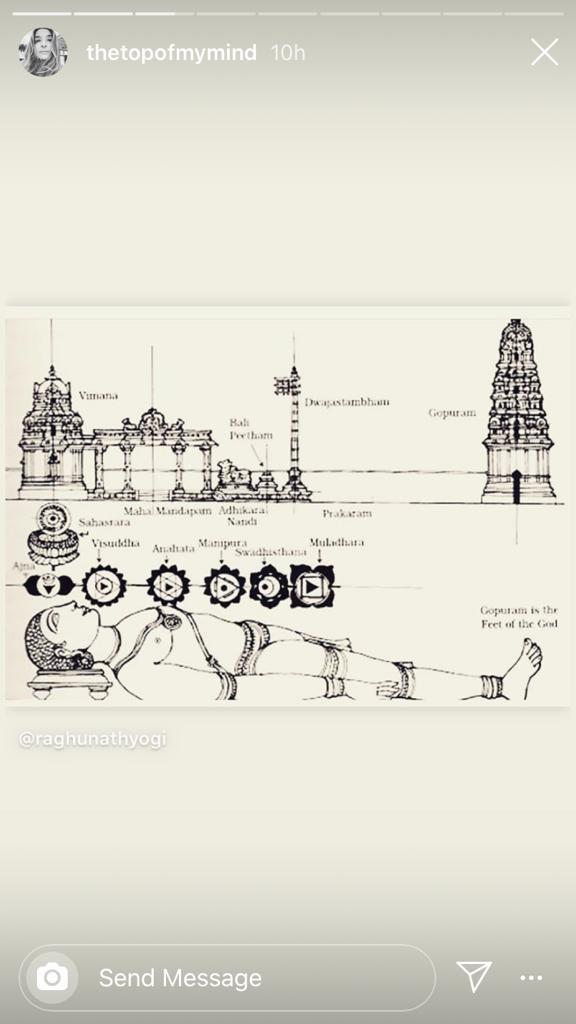
Questions:
What happens to Kundalini when there is an injury to the lower part of the back? Does Kundalini move upwards automatically?
What happens to Ida, Pingala, and Susumna during spine surgery?
Does Lumbar puncture and drainage of CSF take some Pran out? What about injecting anything in CSF or leaving external material in the spinal structure?
What happens to Sahasrara Chakra during brain surgery or injury?
Can Pran leave the body and come back as after resuscitation/CPR?

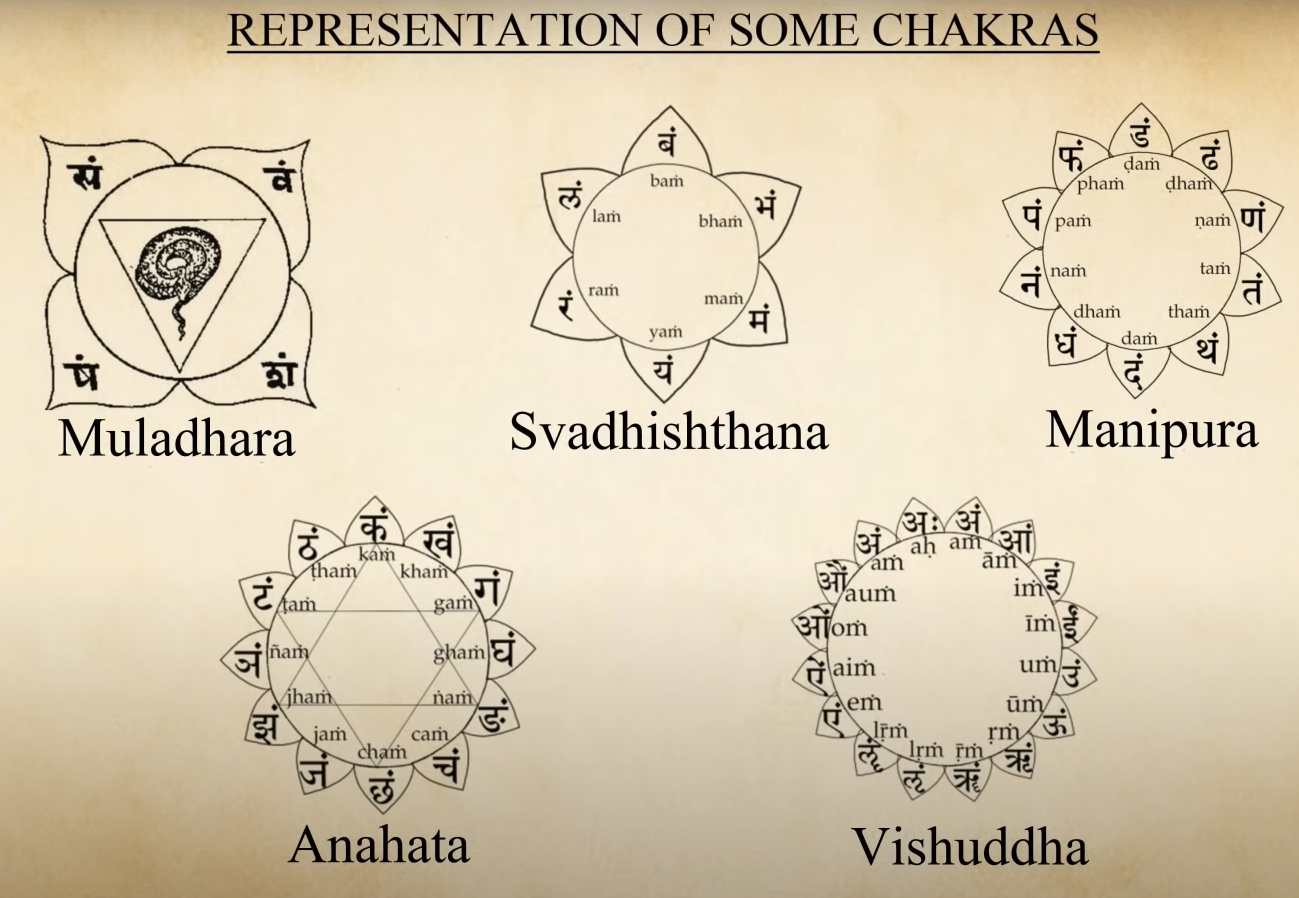
Bharti Raizada
The_Gods_Within_The_Vedic_Tradition_and.pdf
https://www.youtube.com/watch?v=TtlVBYpIv6M&list=WL&index=3
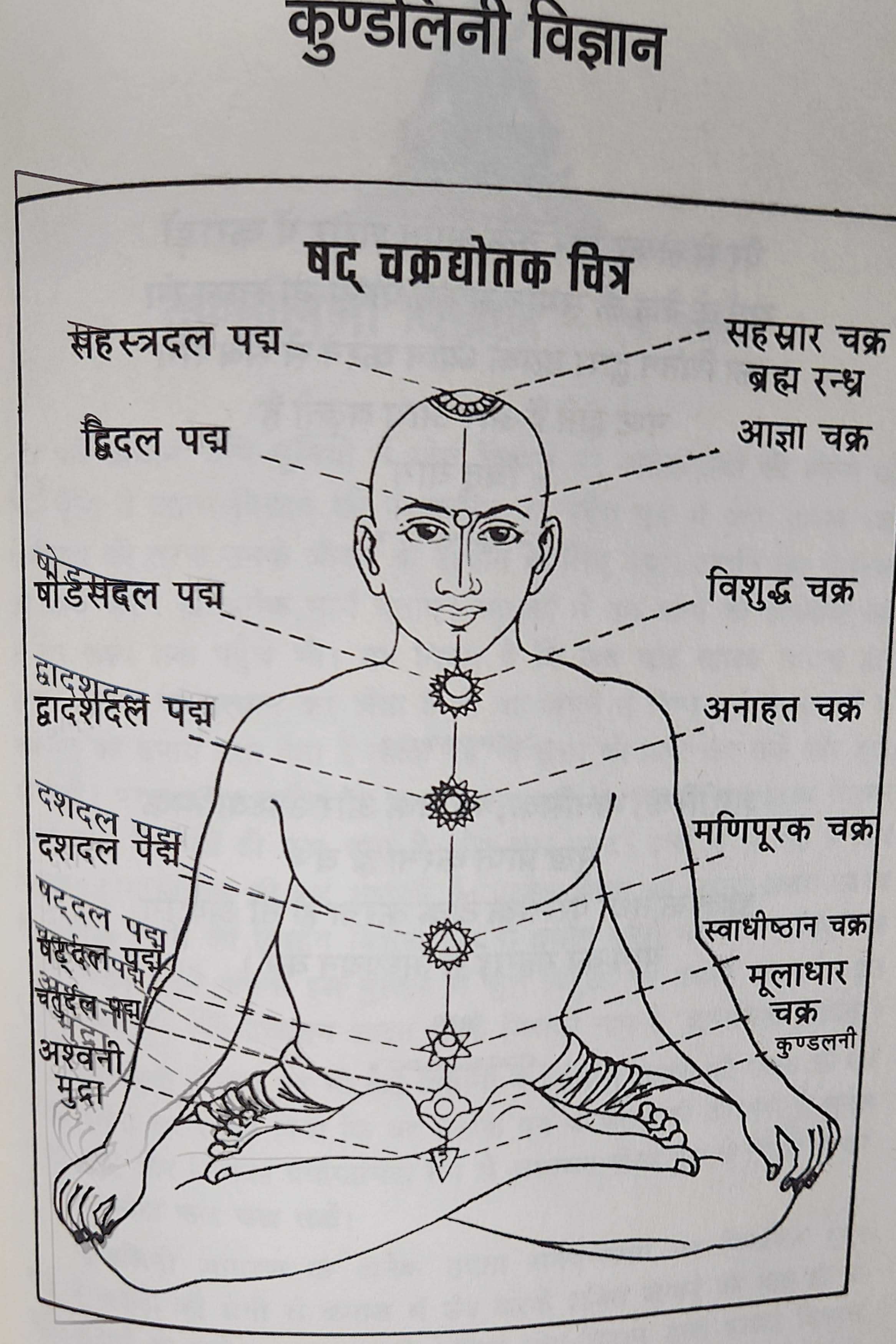
Books:
Kundalini by Ajit Mookerjee
Pics- Sep 29, google photos